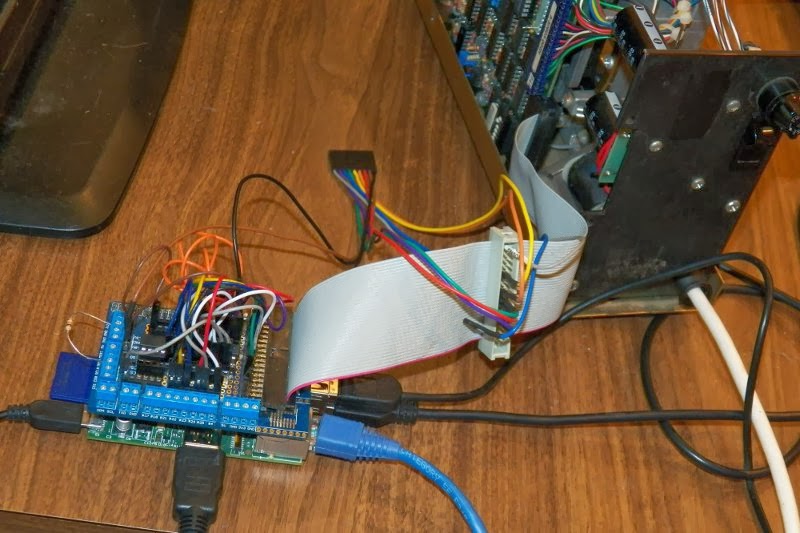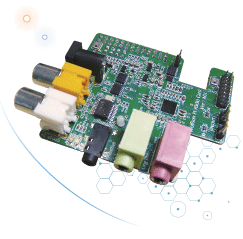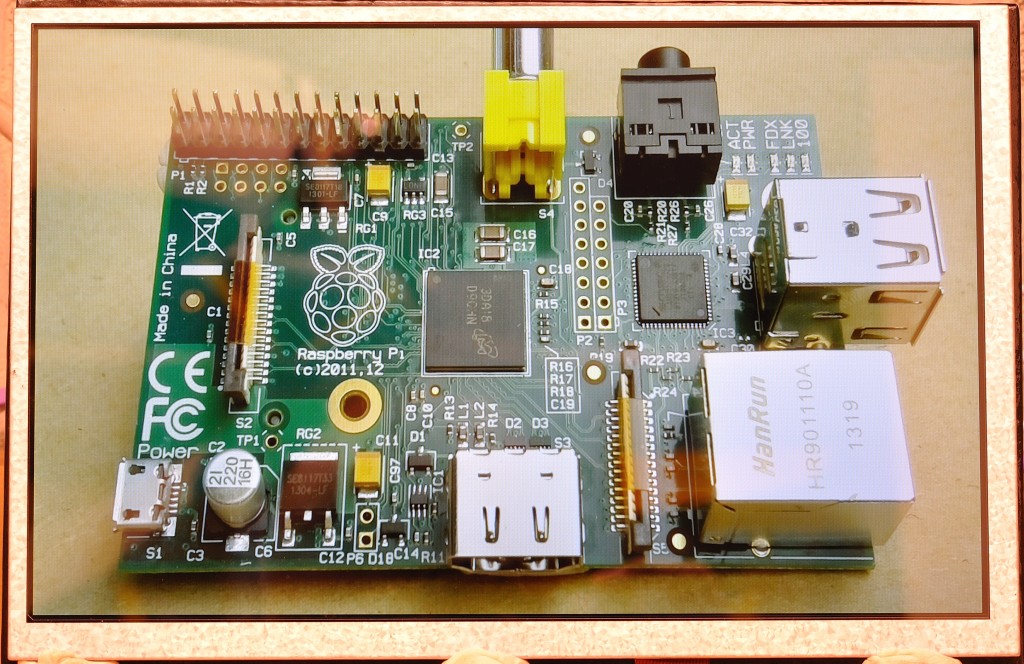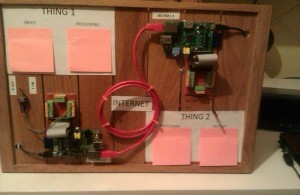UK Children’s news programme Newsround had a feature on the Pi last weekend and the footage has now made it’s way onto the Newsround website. The footage includes interviews with Eben Upton, schoolkids using the Pi and young programmer Amy Mather, who continues to wow the crowds at events around the world.
Using the #RaspberryPi to Read Floppy Disks
Alan Page has worked out how to read a floppy disk from his Pi. Too complicated to explain here, so I’ll let you read his blog post.
Wolfson Pi Audio Card for #RaspberryPi
Doug McFarlan at Wolfson has been leading a team to develop an audio card for the Pi in conjunction with Element 14/Farnell. The card, which plugs into the GPIO, features the following:
- 3.5 mm jack (4-pole) for a headset/boom mic combination for gaming or VoIP applications
- 3.5 mm jack for microphone input
- On-board MEMS microphone
- 3.5 mm jack stereo line input for connection to devices such as digital audio players (iPod etc.) or mobile phones
- 3.5 mm jack stereo line output for connection to devices such as external stereo amplifiers or powered speakers
- Phono jack for electrical (not optical) S/PDIF digital input
- On-board class D power amplifier for external speakers, with connection to external power source if needed.
- Small pin header for extra functions if they are low cost, already on-chip, and don’t require any further components
For more information, read the page on element14. There’s a great intro video on there too. The board is not out yet but you can register your interest as per normal on that page.
RasPi.TV covers HDMIPi – the 9 inch portable Hi-Definition HDMI screen for the #RaspberryPi
Alex Eames, one of the minds behind the HDMIPi screen has blogged about the project on his own site. Not much more information than on the Kickstarter campaign page but it’s always great to hear from Alex and he even goes on to mention some of the possible stretch goals for the campaign (which looks like it’s about to hit the £50k mark).
David Whale’s #RaspberryPi Internet of Things demo board
David Whale (Twitter’s @whaleygeek) has written a blog post about his “Internet of Things Demonstrator”. This is a piece of wood with two Raspberry Pis mounted on it, plus a switch for one Pi and an LED for the other. By using an ethernet cable and some clever Python code, the two Pis can talk to each other and the switch on one Pi controls the LED on the other.
It’s a simple way of showing how two ‘things’ can connect to each other over a network. Take a moment to read it – it’s awesome.
Geek Gurl shares experience of running #RaspberryPi workshops for youngsters
Carrie Anne Philbin has written a blog post her on experience running Pi workshops in libraries. Great story.




